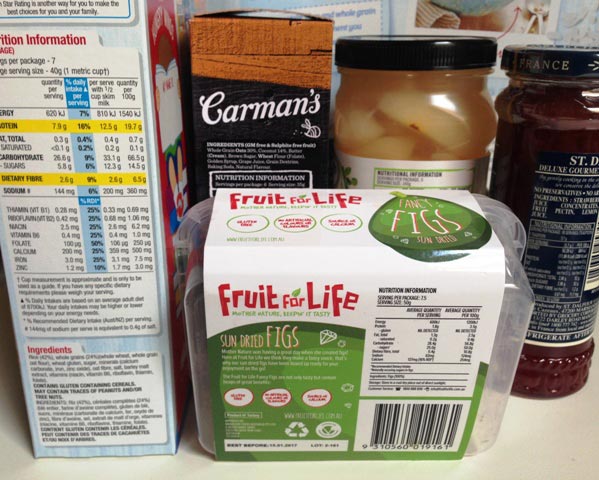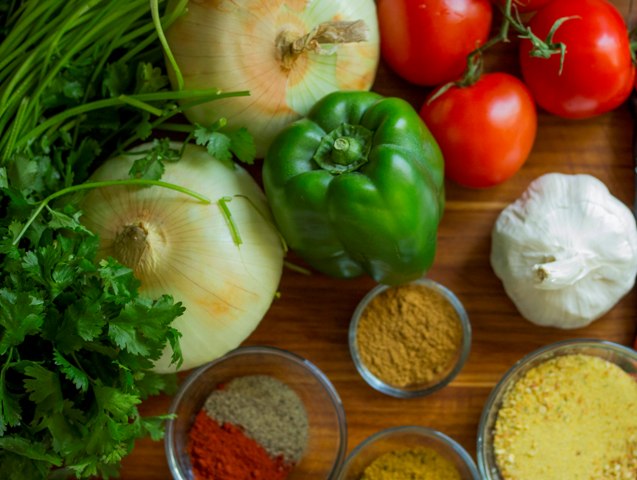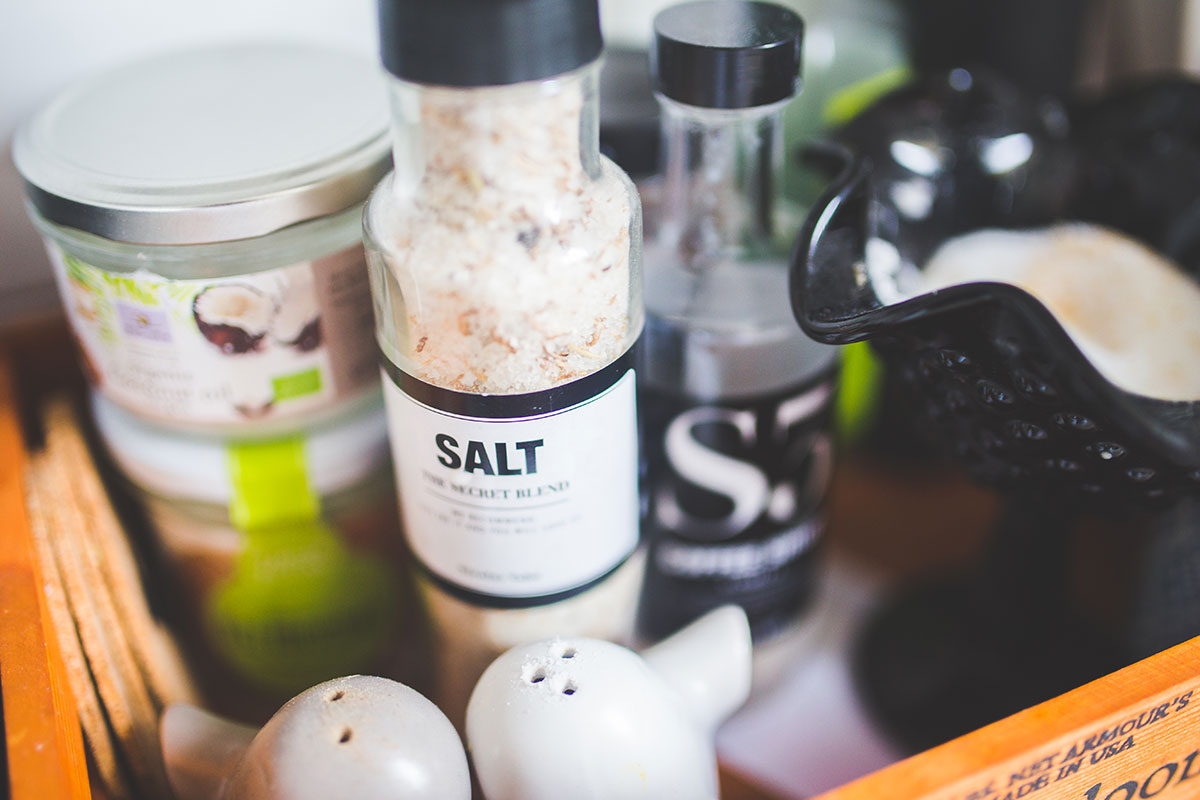Many people with liver disease are advised by their specialist to follow a low salt diet. Unfortunately, quite often no other information is given and people are left wondering just what to eat. [Note: some of the links in this article may no longer be available.]
Salt/sodium, which is it?
Generally we’re used to talking about salt when it comes to food. However, it’s the sodium in salt (which is made up of sodium and chloride) which is of concern to our health. Packaged food labels state the amount of sodium they contain so it’s usually enough to know what your recommended maximum daily intake is. If you need to convert salt to sodium or vice versa, the Heart Foundation has a guide for you

Exactly how much salt?
The Australian Dietary Guidelines say that adults should aim to eat less than 1,600 mg of sodium (4 g salt) per day and should not eat more than 2,300 mg of sodium (6 g of salt). The Heart Foundation recommends the same upper limit of 2,300 mg (6 g salt) for healthy adults with 1600 mg (4 g salt) as the upper limit for those with high blood pressure.
If you have liver disease it’s important for you to ask your specialist or other health care provider how much salt is recommended for you as these limits may not be low enough.
Choosing foods
Foods with less than 120 mg sodium per 100 g are considered low in salt and the Heart Foundation recommends aiming for foods with less than 400 mg per 100 g. Again, this is general advice for healthy people so you must know what’s right for you.

Reading nutrition labels
You will need to become familiar with reading nutrition labels to determine how much sodium you’re getting from each food. Australia’s Healthy Weight Week website has a great guide to reading food labels and assessing the health claims on food packaging. If you’re having difficulty reading the labels on food packaging or would like some idea of what to buy before heading to the shops, many food companies make the nutritional content of their food available online.
Here are some examples of very helpful information presented clearly:
– Mainland Cheese
– Carman’s Muesli Bars
– Paris Creek Farms Yoghurt
Not all food companies are so forthcoming but you may still be able to email them to get the information you want. By law all packaged food in Australia must have a nutrition label.
Base your diet on fresh fruits, vegetables, whole grains and legumes.
Common sources of salt in our diet
High salt foods include: deli meats, seafood without bones (ie prawns, mussels), bread and other baked foods, salted butter, margarine, yellow cheeses, almost all sauces and condiments and most canned and packaged foods unless specifically labelled as being low in salt. Some drinks, such as energy drinks, are also high in salt.
This can certainly make eating and meal planning very challenging and almost everyone is going to lose a number of their favourite foods when directed to reduce their salt intake. There are also few good options when it comes to takeaway. Often people assume that it will be easier for people with a sweet tooth but biscuits, cakes, chocolate and other sweet foods usually have high levels of salt too!
What should I eat?
Base your diet on a good foundation of fresh fruits and vegetables, whole grains and dried legumes (peas and beans). Protein sources will depend on whether or not you eat animal products but could include lean meat, poultry and fish, unseasoned tofu, some white cheeses and eggs as well as the protein you’ll get from legumes.
Frozen fruits and vegetables can be very handy substitutes, are usually low in salt and retain their nutrients well. They can be great to have on hand especially since very few canned products are low in salt and you may struggle to find other convenience foods.

Add flavour with fresh or dried spices (not spice mixes as these are usually high in salt), fresh herbs, lemon or lime juice, vinegar, ginger, chilli and garlic. Remember not to add extra salt while cooking or at the table.
More detailed information about what to eat (and where to find it) is available from Salt Matters – Australia and New Zealand. Consider seeing a dietician to help you come up with a meal plan. Your doctor should be able to refer you, and it may even be subsidised as part of a care plan.
Adjusting your palate
The good news is that you can adjust your palate, although it can be tough when you have to change quickly. Our taste buds only live for three weeks so theoretically we should be able to convince the new batch to like different foods. Of course, food has many meanings for us and change may be hard. If gradual change is not be an option for you, ease the way for yourself with other – non-food-related – treats.
Recipes
Here are a few sites to get you started with your search for low sodium recipes:
Diabetic Living Magazine
Australia Healthy Food Guide (a commercial magazine, not the official government guidelines)
All Recipes
More information
Eat for Health – home of the Australian Dietary Guideline
Salt Matters – Australia and New Zealand
Last updated 3 June 2024
More from:
Enjoyed this article? Subscribe to be notified whenever we publish new stories.
Subscribe for Updates





